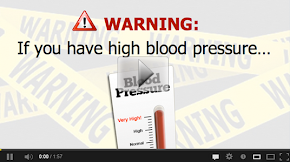Symptoms of pulmonary hypertension
What are the symptoms of pulmonary hypertension?
Yesterday, we discussed what is pulmonary hypertension.
Now you should have a clue about what it really is. However, the online
pharmacy helps you to understand in detail.
In my previous article, I highlighted the basic symptoms of
the disease, but they were just a short list of the most common. Here's what
you need to see to differentiate it from other heart and lung diseases.
What should be the symptoms that I'll have to look for?
Although the first symptoms are not specific, they can
develop over time. These are the most important symptoms are usually present if
you are a patient with pulmonary arterial hypertension:
• shortness of breath
• Dyspnea
• fatigue
• nonproductive cough
• Angina
• fainting or syncope
• peripheral edema (swelling around the ankles and feet)
There may be hemoptysis (coughing up blood) in some cases,
but that is very rare.
Although these symptoms are indicative of a major problem,
they develop gradually over time which delayed the patients to see the doctor.
Some people may delay as they will not go to the doctor for years. This will
also damage your health and makes recovery much more difficult.
There are even differences in symptoms of pulmonary
arterial hypertension that arises in arteries and veins of the pulmonary
vasculature. If this is the case of venous it will make you short of breath
while you are lying flat (orthopnea) or sleep (paroxysmal nocturnal dyspnea),
while in pulmonary arterial hypertension (PAH), it generally has
no such symptoms.
What are the signs of a doctor will check for pulmonary hypertension?
As long as the doctor is concerned, it might have to check
some important signs in your arsenal. To do this, he will perform a physical
examination on you and to look out for the typical signs of the disease such
as:
• a strong P2 (pulmonary valve closure sound)
• (Para) sternal uprising
• jugular venous distension
• pedal edema
• Ascites
• Hepatojugular reflex
• Clubbing
• tricuspid insufficiency
What is the meaning of these signs to the doctor?
These are signs of cardiovascular origin and are therefore
of paramount importance for the doctor to examine the disease.
There is usually an increased pulmonary component of
the second heart sound indicating paradoxical or division that is present is
severe dysfunction of the right ventricle. This is the second heart sound may
be palpable in many cases the doctor.
In many cases there may be a regurgitation of pulmonary
origin also called Graham Steell whisper.
Most of the time a murmur of tricuspid regurgitation may be
present as well, while a right ventricular elevator (lift) may also be noted.
If volume overload or right ventricular failure, or even
when the two co exist, it is a high pulse jugular vein. Here, we often see big
waves V due to severe tricuspid regurgitation.
Hepatomegaly is often still present with liver
palpable pulses along a fault abdominal-jugular reflex.
Ascites (abdominal swelling due to fluid accumulation) are
present in untreated patients or patients with decompensated right heart
failure worsening.
Edema with varying degrees may be present, whereas if you
are in bed you are likely to develop
Examination end can reveal edema of varying degrees.
Patients who are bedridden can presacral edema.
On examination of the lungs results are usually normal for
the general population.
Now, you must keep in mind that these are the signs that
help doctors diagnose your illness. For further confirmation and pulmonary
hypertension diagnosis, doctors may also require
larger and specific tests.












.jpg)






0 comments:
Post a Comment